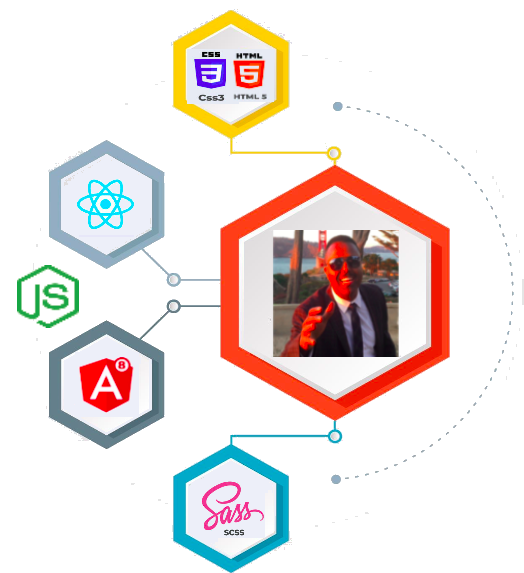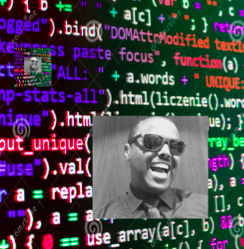
- Software Engineer, Product
- Modern Technology stacks:
- So What is a Tech Stack?
- Frontend tech stack
- Backend tech stack
- How to choose/build a tech stack
- What is a CI/CD Pipeline?
- Software Business Analyst
- Node.js Express Back-end Overview
- Build React App With Java Backend
- Connecting React-Frontend and NodeJS/Express Backend Applications
- React-Frontend, Node.js/Express-Backend, MySQL Architecture
- React Frontend with a NodeJS/Express Backend
- So What is git ?
- Git vs GitHub
- Big O Notation


Backend Tech Stack

Backend tech stacks (server-side) use different programming languages and tools to handle requests from the frontend and provide applications with data storage, processing, analytics, and more. The backend stack comprises many programming languages, including:
You have to choose the server-side frameworks and tools carefully, because some technologies are lightweight, fast, and suitable for basic purposes, whereas some are loaded with features that only a complex application might need.
There are many other components - like APIs, analytics tools, BI tools, cloud services, and microservices - that can enhance the functions of an application.
 MERN Stack is quickly becoming the most popular tech stack in the world as it offers a great mix of features and benefits. This open-source JavaScript Tech Stack is the best option if you want your app, software, site, or eCommerce store fast, secure, affordable, scalable, and efficient, so you can grow at your own pace without worrying about capacity constraints holding back growth potentials!
MERN Stack is quickly becoming the most popular tech stack in the world as it offers a great mix of features and benefits. This open-source JavaScript Tech Stack is the best option if you want your app, software, site, or eCommerce store fast, secure, affordable, scalable, and efficient, so you can grow at your own pace without worrying about capacity constraints holding back growth potentials!
Contributed to the design of a Web and Mobile applications on an application platforms.
Full Stack
Please click here
Step by Step How To Develop and Build React App With Java Backend
Full Stack
Please click here
Step by Step How to connect a React Frontend with a NodeJS/Express Backend

Full stack tech stack
This is the most common type of stack used in desktop web apps. It consists of both frontend and backend technologies - for example, Angular for the UI, a framework like Django for the application logic, and a database like MongoDB for managing data.Tech stack components explained
Let's now take a look at the main components of a technology stack.User interface
You can use markup like HTML and CSS stylesheets, or frameworks like Bootstrap or Tailwind, depending on the styling needs of the project.Programming languages
Programming languages take care of the important business logic that your applications need. Some top programming languages are JavaScript, TypeScript, Java, Python, Ruby, Scala, PHP, and C#.Frameworks
Frameworks provide a structure to the application and have common utilities so that you don't have to write every piece of logic from scratch. Some popular web frameworks are Express, Spring, Django, Laravel, Rails, and .NET.Runtime environment
The runtime environment is the software in which an application is run. Runtime provides cross-platform compatibility. Java Runtime Environment (JRE), Node.js, and Common Language Runtime (CLR) are examples of runtime environments in tech stacks.Servers
A web server takes in requests (http) from the client (for example, browser), passes it on to the database for the requested information, and handles the response. Apache HTTP and Nginx are commonly used robust web servers.Databases
Databases are an integral part of a tech stack. Whether your application is simple or has many workflows, you need a place to store all your information. Some popular databases are MongoDB SQL and MySQL. Modern data platforms like Firebase Realtime Database, MongoD, NoSQL further enhance the functionality of a database by providing intelligent querying, aggregation, and transformation features, in addition to data storage and retrieval.There are many other components - like APIs, analytics tools, BI tools, cloud services, and microservices - that can enhance the functions of an application.
Advantages of the right tech stack
So, why do you even need a tech stack? Firstly, you are more likely to build an application that can be used by a large number of people. If you choose frameworks and databases that scale well, during the planning phase itself, you will be saved from the horizontal and vertical scaling issues as your user base grows. Also, a proper technology stack will help speed up the development process as you can hire full-stack developers or experts in individual technologies. You can also pick a specific tech stack to leverage your current team's expertise. Additionally, it becomes easier for developers to communicate about the functioning of the application. Planning a technology stack ahead means you will already know the resources, infrastructure, automation, hardware, and other project requirements, thus saving both cost and time. Lastly, since you know the objective and size of the project/web app you are going to build, you can decide on the complexity of the stack, refrain from using technologies and operations that are really not required for your project, and avoid bulky resources.Technology stacks to choose from.
PHP
PHP is used as a base for developing web applications.Laravel
Laravel is part of the PHP foundation and considered one of the most popular PHP frameworks.JavaScript
JavaScript (or JS for short) is used for handling user interactions, retrieving data, and processing requests.Python
Python is a widely used programming language used for scripting purposes.Databases
MySQL,SQL,Firebase,MongoDB, NoSQL Databases are used for storing data and handling requests.Node.js
Node.js is a Javascript run time powered by Google chrome V8 Javascript engine.Java
Java is an object-oriented programming language..C ++
C++ is used for developing high-level functionality and providing stability.Go
Go is a programming language developed by Google and is considered to be fast, reliable, and scalable.MERN Tech Stack
 MERN Stack is quickly becoming the most popular tech stack in the world as it offers a great mix of features and benefits. This open-source JavaScript Tech Stack is the best option if you want your app, software, site, or eCommerce store fast, secure, affordable, scalable, and efficient, so you can grow at your own pace without worrying about capacity constraints holding back growth potentials!
MERN Stack is quickly becoming the most popular tech stack in the world as it offers a great mix of features and benefits. This open-source JavaScript Tech Stack is the best option if you want your app, software, site, or eCommerce store fast, secure, affordable, scalable, and efficient, so you can grow at your own pace without worrying about capacity constraints holding back growth potentials!
MongoDB
A robust database that's perfect for storing large amounts of data.Express
A lightweight web framework helps you manage your application's routes and middleware.Node.js
An asynchronous event-driven JavaScript runtime perfect for building scalable real-time web applications. Combine these four technologies to build your next big idea. The MERN stack is a great place to start if you're looking to get into web development.React
A popular JavaScript library for building user interfaces. Full Stack Work Experience:Contributed to the design of a Web and Mobile applications on an application platforms.
Full Stack
Please click here
Step by Step How To Develop and Build React App With Java Backend
Full Stack
Please click here
Step by Step How to connect a React Frontend with a NodeJS/Express Backend
What is AJAX, How does it work, and What is it use for?
Please click here to see it yourself. Ajax and Action Behind The Scenes?

 Printer Friendly Version
Printer Friendly Version